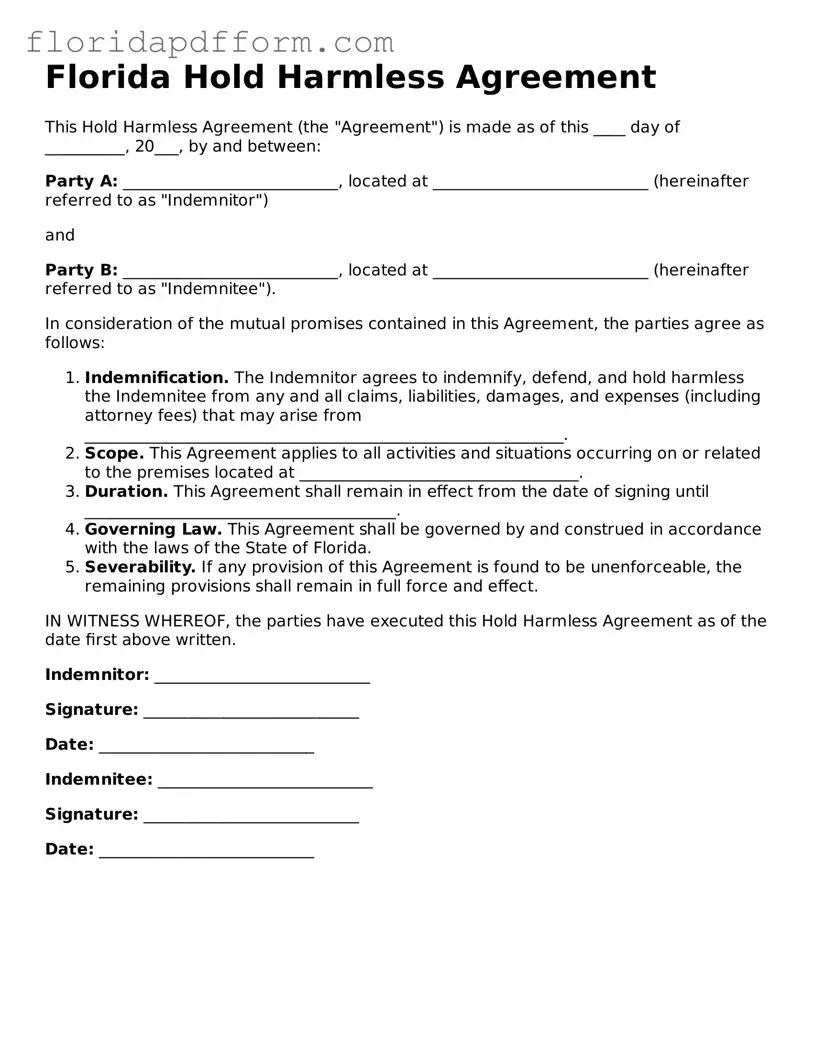Blank Hold Harmless Agreement Template for Florida
The Florida Hold Harmless Agreement form is a legal document that protects one party from liability for any injuries or damages that may occur during a specific activity or event. By signing this agreement, individuals acknowledge the risks involved and agree not to hold the other party responsible for any resulting harm. This form is commonly used in various situations, including rental agreements, events, and recreational activities.
Launch Editor
